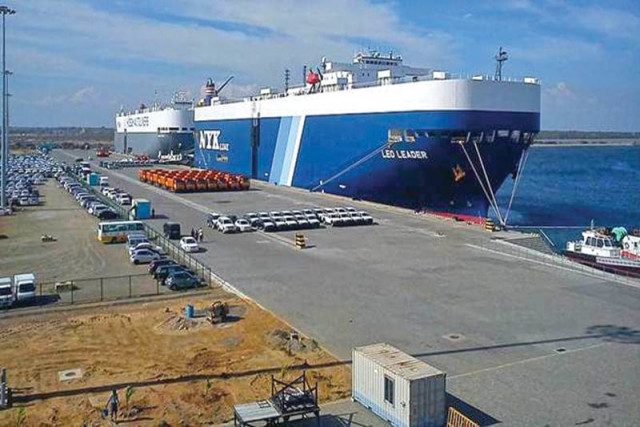The tale of a deep-sea port city
Economic growth cannot be created by infrastructure investment alone

The Sri Lankan economy could not sustain the project. Eventually, it faced two choices: abandon Hambantota or give it to another party to run it. PHOTO: REUTERS
Sri Lanka is located on the sea route that sees oil shipments travel from the Middle East, making energy security a key reason China was keen to invest. But it also fits neatly into the Chinese Belt and Road initiative, building road, rail and sea links to boost trade with countries around the world.
Hambantota district sits at the southern tip of the island, 240 kilometres by road from Colombo. Under the former Sri Lanka president Mahinda Rajapaksa, the government decided to build a new port with a Chinese loan of $1.4 billion.
Sri Lanka battles fire aboard mega container vessel
The original plan was to develop a free port covering an area of 2,000 hectares where goods could be manufactured or value added and shipped overseas. The annual interest plus capital repayments would amount to about $111 million, which were planned to be paid by the port’s authority itself.
The first phase of the Hambantota harbour became partially operational in 2011. The transhipment of vehicles began in 2012 with 70% of the vehicles coming into Hambantota being transhipped to other countries.
In 2014, 335 vessels called at the Hambantota harbour and 295 in 2015. The port made an operating profit of $6 million in 2014 and $7.8 million in 2015. It was estimated that the project will achieve break even within 10 years, implying the annual revenue would be in the range of $100 million.
The bigger vision was to build a number two city that would grow around an emerging deep-sea port in an under-developed, jungle area that is best known for its pristine beaches and wildlife preserves. There were also promises to create 100,000 new jobs, which will absorb the unemployed locals.
However, one thing was missing. There was no demand from the businesses to build it. Hambantota had no accompanying industrial zone or other local businesses to drive demand. Although multi-lane highways were built, along with a new cricket stadium and a conference centre, there was not much business around.
All the while, this loss-making infrastructure continued consuming massive amounts of national revenue to operate and keep running. The Sri Lankan economy, which has not fully recovered from the war, could not sustain the project.
Eventually, Sri Lanka faced two choices: abandon Hambantota or give it to another party to run it. The government opted for the second option.
The trains and sea ports of China's new Silk Road
Last month, Sri Lanka signed a deal with the Chinese government to hand over Hambantota Port on a 99-year lease. Under this deal, China and its state-owned companies will run the deep-sea port and Mattala International Airport as public-private-partnerships (PPP) that will be driven by debt-for-equity swaps.
China Merchants Holdings (International) Company will acquire 80% share in the Hambantota deep-sea port in exchange for taking up $1.1 billion of Sri Lanka’s debt to China, which has now swelled to $8 billion.
Another Chinese company will also take over the debt-riddled, revenue-draining Mattala International Airport in an attempt to turn it around.
Chinese firms have been given operating and managing control of Mattala Airport, built by Chinese loans of $300-400 million, because the Sri Lankan government is unable to bear annual expenses of $100-200 million.
Now the same Sri Lankan president, who signed the original agreement, believes that the 99-year lease impinges on Sri Lanka’s sovereign rights because a foreign company will enjoy the rights of the landlord over the 2,000-hectare free port while operating the entire harbour as well.
The island’s total debt stands at $64 billion. About 95% of all government revenues go towards debt repayment.
“The Sri Lankan government is in a real dilemma. It is almost bankrupt and needs money to run the economy,” Chaminda Hettiarachchi, lecturer and researcher at the Colombo University believes. “Sri Lanka needs Chinese money at least in the short term. But Chinese projects are not useful to the Sri Lankan people.”
In the meanwhile, the multi-lane highways built in Hambantota are largely empty and the cricket stadium is mostly used for local weddings. Economic growth cannot be created out of thin air by investment in the infrastructure alone. Keynes was wrong.
The writer is the founder of PRIME Institute; an independent think tank based in Islamabad and is now based in Kuala Lumpur, where he is affiliated with IDEAS
Published in The Express Tribune, August 21st, 2017.
Like Business on Facebook, follow @TribuneBiz on Twitter to stay informed and join in the conversation.



















COMMENTS
Comments are moderated and generally will be posted if they are on-topic and not abusive.
For more information, please see our Comments FAQ